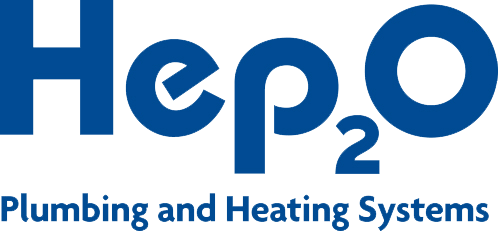Back
Why You’re Getting More Door Leads (And How to Turn Them Into Your Best Customers)
If you’ve noticed more enquiries for doors landing in your inbox lately, you’re not imagining it. Search data from August 2021 through July 2025 shows that while most home improvement searches dropped by 5.7%, replacement front door searches are actually climbing.
At the same time, generic terms like “composite doors” or “double glazing” are falling. What does that mean? People aren’t just browsing anymore. They’re ready to buy something specific, and right now, that something is a new front door.
You’ll learn why this is happening, what it means for your business, and most importantly, how to turn a £2,000 door job into a £15,000 customer over the next 18 months.
The market has changed, not your leads
Between January and July 2025, total searches for windows, doors, and glazing fell by nearly 6% compared to the same period in 2024. uPVC windows, timber windows, aluminium windows, double glazing, and even composite doors as a category are all down or flat.
But “replacement front door”? That’s going up.
Here’s what’s happening. The post-lockdown boom is over. People aren’t throwing money at full-house refits like they were in 2021 and 2022. They’re being careful. They’re starting small. And when homeowners want to make a visible, affordable change that improves how their house looks from the street, they pick the front door.

Replacement front door searches are climbing even as overall fenestration demand drops by 5.7%, making door leads a growing opportunity for installers.
| Search Term | Trend (Jan–Jul 2025 vs 2024) |
| Replacement front door | 📈 Up |
| Composite doors | 📉 Down |
| uPVC windows | 📉 Down |
| Double glazing | 📉 Down |
| Overall fenestration | 📉 Down 5.7% |
It’s not that your lead generation has gone wrong. It’s that the market has shifted, and doors are what people actually want right now.
There’s another clue in the data. Branded searches are rising. Terms like “Solidor front door” and “Veka composite doors” are spiking. When someone types in a brand name, they’re not just curious. They’ve done their homework. They’re close to making a decision. That’s a warm lead, not a tyre-kicker.
So if your pipeline feels heavy on door leads, that’s not a problem. That’s what the market is giving everyone right now. The question is what you do with it.
Why front doors are the new starting point
Think about how most people approach big spending. They don’t jump straight to the deep end. They test the water first.
A full house of windows, a new extension, an orangery? That’s a big commitment. It costs serious money. It disrupts your home for weeks. Most people need to trust you before they’ll say yes to that.
A front door is different. It’s one item. It’s a manageable price. It gets fitted in a day or two. If you do it well, the customer gets an instant result they can see every time they pull up to the house. And if you do it really well, you’ve just earned their trust for the next conversation.
That’s the real value of a door lead. It’s not the margin on the door itself. It’s what comes after.
What happens during the survey is that you win
Most installers treat a door survey like a checklist. Measure the opening. Check the frame. Quote the price. Done.
But if that’s all you’re doing, you’re leaving money on the table.
Here’s what the best installers do. They ask questions.
- “How old are your windows?”
- “Have you noticed any draughts around the back door?”
- “Are you planning any other work on the house in the next year or two?”
You’re not being pushy. You’re being helpful. Because once you’re there, once you’ve got your tape measure out and you’re looking at the property, you’ll spot things the customer hasn’t noticed yet. A cracked seal. A tired-looking bay window. A back door that doesn’t sit right in the frame.
You mention it. You explain what it means. You give them a price there and then for fixing it while you’re doing the door.
Sometimes they’ll say yes on the spot. Sometimes they’ll say “not yet, but we’ve been thinking about it.” Either way, you’ve planted the seed.
The follow-up is where most people lose it
Let’s say the customer just wants the door for now. You fit it. It looks great. They’re happy. You send the invoice, they pay, and you move on to the next job.
That’s where most installers stop. And that’s a mistake.
Because in six months, that customer might be ready for new windows. In a year, they might want bifold doors for the back. In 18 months, they might be talking to their neighbour about getting a porch built.
If you stay in touch, you’re the first person they call. If you don’t, they’ll ring whoever shows up first on Google that week.
Here’s the truth: most installers know follow-up matters. They just don’t do it. Why?
Forgetting. It takes time. It feels pushy. You don’t know what to say.
But here’s what actually happens: if you don’t stay in touch, a competitor will. And that £2,000 door customer who could have been worth £10,000? Someone else gets them.
The money is in the follow-up. Don’t leave it on the table.
A simple follow-up plan that works
- One week after the install: Send a message asking how they’re getting on with the door. Any issues, you’ll sort them.
- Three months later: Check in again. Mention you’re in the area soon if they want anything else looked at.
- Six months later: Send a quick note with a seasonal offer. Summer’s a good time for bifolds. Autumn’s when people think about draughts.
- Once a year: Drop them a Christmas card or a short email. Just stay on their radar.
You don’t need fancy software for this. A spreadsheet and a calendar reminder will do it. Or if you’ve got a CRM, set it up to nudge you automatically.
The script that opens the bigger conversation
Some customers need a little nudge to think beyond the door. Here are a few lines that work without sounding like a hard sell:
- “Your new door’s going to make the rest of the frontage look a bit tired. A lot of customers come back for the windows within a year or so. I can give you a price now if you want to think about it.”
- “We’re doing a few jobs in this area over the next couple of months. If there’s anything else you’ve been putting off, now’s a good time while we’re local.”
- “Most people who get a new front door end up doing the back door within 18 months. If you want, I can measure it now and give you a price to keep on file.”
- “Did you know you can spread the cost over 12 months with no interest? A lot of customers do the door now, then add the windows on in a separate agreement.”
None of that is pushy. You’re just making it easy for them to say yes when they’re ready.
Why your new door customer will talk about you
Big jobs are great, but they don’t always get talked about. A full house of windows? Your customers are pleased, but it’s not exactly a conversation starter at a barbecue.
A new front door? That gets noticed. Neighbours ask about it. Friends comment when they visit. The postman mentions it. And when someone says, “Where did you get that done?”, your name comes up.
Word of mouth still matters. In fact, in a market where people are being more careful with money, a recommendation from someone they trust counts for more than it used to.
If you do a clean job, turn up on time, don’t leave a mess, and fit a door that looks the business, that customer will talk about you. And the person they talk to might be the one who wants the full house of windows.
Turn one door into three jobs
Here’s a realistic example of how this plays out.
| Timeline | Job | Value |
| March | Composite front door | £2,200 |
| June | Matching back door | £1,800 |
| January (following year) | Front windows | £6,500 |
| Total customer value | £10,500 | |
By the time you add it all up, that one door lead has turned into £10,500 of work. And because you’ve done three jobs for them, they’ve already recommended you to their daughter, who wants bifold doors for her extension.
That’s how it works when you treat a door lead as the start of a relationship, not a one-off job.
What to do with the data
If your account manager or marketing team is sending you reports showing more door leads, don’t push back. That’s what the market is doing right now.
Instead, ask yourself:
- Are we quoting every door lead properly, or are we letting some slip because we think they’re too small?
- Are we asking questions during the survey to find the bigger opportunity?
- Are we staying in touch after the job’s done, or just moving on to the next one?
- Are we tracking how many door customers come back for more work?
If you can tighten up those four things, you’ll start seeing door leads differently, not as a frustration, but as a pipeline of future work that’s just getting started.
Keep the momentum going
The market right now is giving you door leads because that’s what people are searching for. They’re being careful with money, so they’re starting small. But that doesn’t mean they’ll stay small.
If you treat every door job as a chance to build trust, ask good questions, and stay in the conversation, you’ll be the one they call when they’re ready for the bigger project.
Doors aren’t the problem. They’re the opportunity. You just have to know what to do with them.
Ready to make more from your door leads?
If you’re getting door enquiries and want help turning them into long-term customers, we can show you how. At Purplex, we work with installers and home improvement companies across the UK to build marketing strategies that generate consistent leads and maximise every opportunity.
Whether you need support with follow-up systems, conversion tactics, or a complete marketing plan, our team has over 20 years of experience in the home improvement sector. We know what works because we’ve helped hundreds of businesses just like yours grow their revenue and customer base.
For more information about how we can help your business capitalise on door leads, get in touch with our team:
- Call us: 01934 808132
- Email us: grow@purplexmarketing.com
- Contact form: Visit our contact page
We’ll talk through your current situation, explain what’s possible, and show you how other installers are making door leads work harder for their business.
How Do You Convert Door Leads Into High-Value Customers?
Door installation enquiries are trending upward whilst overall home improvement searches decline. Below are answers to frequently asked questions about door leads, conversion strategies, customer lifetime value, and market trends affecting installers.
Won’t follow-up messages annoy customers?
No. Customers appreciate hearing from you, especially if there’s an issue. What annoys them is being ignored or pushy hard-selling. A friendly check-in asking “how’s the door?” is professional, not annoying.
How long does follow-up actually take?
Each message takes about 10 minutes using a template. If you complete 20 door jobs a year, that’s roughly 30 minutes monthly across all customers. Compare that to the time spent on cold leads.
What if I don’t have a CRM system?
You don’t need one to start. Use a free Google Sheet with customer names, install dates, and follow-up reminders. Set phone calendar alerts. No software required.
Does this work in rural areas?
Yes. Decision cycles are slower, so space follow-ups further apart (4-5 months instead of 3). Rural customers are often more loyal once you’ve earned trust.
How do I know this actually works?
Track it. After 20-30 door jobs with proper follow-up, review which customers came back for additional work. Most installers see 40-50% return for more work within 18 months with follow-up. Without it, that drops to 10-15%.
What should I say in follow-up messages?
Use the templates in this guide. Personalise them slightly, but don’t overthink it. Keep it helpful: “How’s the door holding up?” beats a generic sales pitch every time.
Can I automate all the follow-up?
You can automate reminders, but keep messages personal. A template is fine—completely generic emails aren’t. Spend 10 minutes personalising each one.
What if a customer ignores my follow-up?
After two or three attempts with no response, move on. But this rarely happens. Most customers either engage or politely decline. Focus on the ones who do respond.
When should I mention pricing?
Week-one follow-up: no mention. Three-month check-in: just mention you’re available for a free assessment. Six-month onwards: you can include specific offers. Build trust first, sell second.
Does seasonal timing matter?
Yes. Spring and summer see more leads and faster decisions. Adjust your first upsell conversation to 6-8 weeks in summer, 4-5 months in winter. But the principle stays the same: stay in touch at regular intervals.
You might also like to read
If you found this article helpful, here are some other resources from Purplex that dive deeper into lead generation, customer conversion, and marketing strategies for home improvement companies:
- Lead Generation: Ultimate guide to generating business leads
A comprehensive look at how to build a lead generation strategy that works, covering everything from identifying your target audience to choosing the right marketing channels. - Five lead generation strategies and tactics for growth
Practical tips on creating and refining your lead generation approach, with a focus on converting enquiries into long-term customers. - Home Improvement Marketing Ideas | 30 Ways to Win More Leads
Thirty proven marketing tactics for home improvement businesses in 2025, from local SEO and PPC to social media and content marketing. - How to choose the right marketing agency for your installation business
Thinking about getting professional help with your marketing? This guide walks you through what to look for when selecting an agency that understands the home improvement sector. - A foot in the door?
Purplex founder Andrew Scott’s original take on why smaller jobs like door installations shouldn’t be dismissed, and how they can lead to bigger opportunities.
Want to stay updated with the latest marketing insights for the home improvement industry? Browse all our articles here.
This entry was posted in Home improvement, Lead Generation





